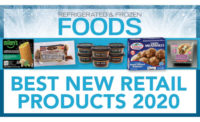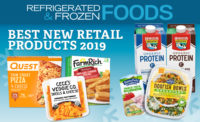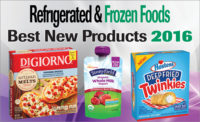After a month of online voting throughout March, the top five was set based on vote totals from the public. Our overall winner – Hearth & Fire Pizza – was featured on a recent episode of the From the Cold Corner podcast.
R&FF spoke with each of the winning companies about how their products and packaging fit into a crowded refrigerated and frozen foods marketplace, sustainability efforts, plans for the future and more.
(These interviews have been edited for brevity and clarity).
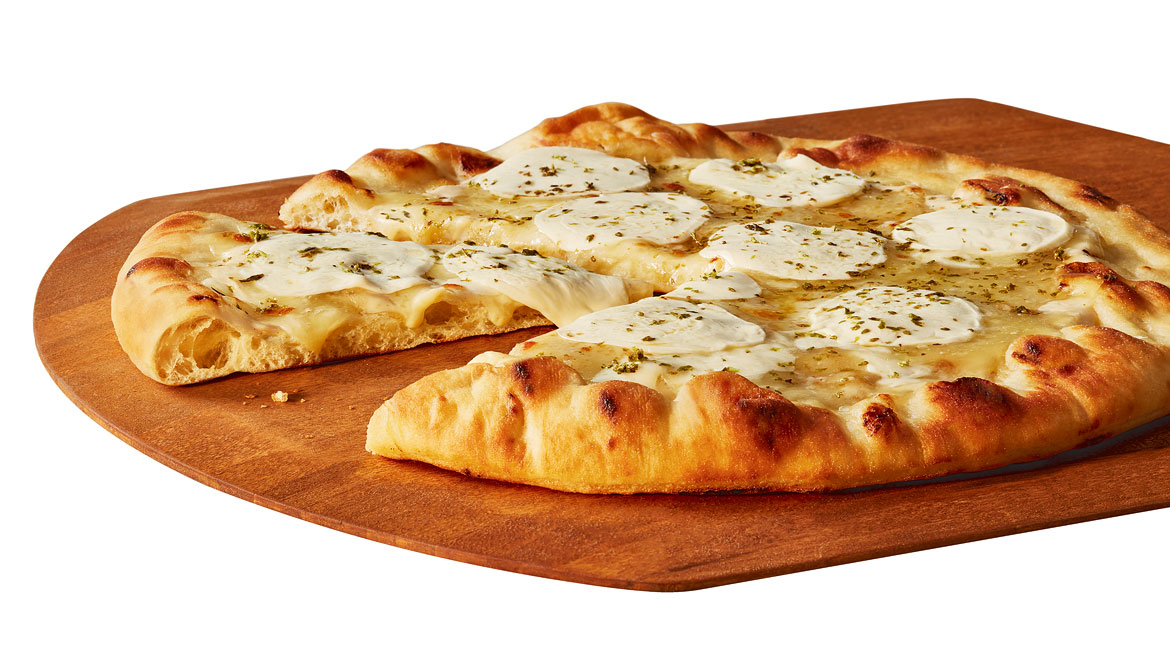
Hearth & Fire Pizza
Brian Thompson, senior marketing manager
R&FF: Congratulations on placing first in our 2023 Best New Retail Products Contest. What does the recognition mean to Hearth & Fire?
Thompson: It feels great to get this recognition for a brand and product that we poured so much heart and soul into. When you build something with craft and care, you always hope that people will appreciate it as much as you do — and this is validation
R&FF: What innovative features does Hearth & Fire have that helped it finish first?
Thompson: With Hearth & Fire pizza, our most important ingredients are intention, care and craft.When we think about what contributed to our success, it comes down to three things: The people. The ingredients. The process.
Hearth & Fire pizza is crafted by artisans. We’re part of a community of crafts people and artisans across the world who bring passion to what they do, an eagerness to share their discoveries and are always looking for ways to improve.
For instance, Shelly Heid, who is our senior director of product development, brings more than 30 years of experience in pizza and bringing together artisans to create food that inspires connection and community. Roger Bentz, our principal food scientists, has been working with dough for more than 20 years. He is always pushing what’s possible to create the perfect crust. We also had input throughout the development process from our Corporate Executive Chef Erik Jones, who brings vast knowledge of the best foods in the world as well as ideas on how to merge traditional pizza-making methods with new innovation. Principal Process Engineer Gaelle Denais Kruse was also an important part of our development. She focused on every detail of our production process to ensure each pizza met the high craft-quality standards that we set for ourselves. And of course, the product doesn’t get to the consumer without a terrific packaging system — keeping the flavors and colors and textures of the pizza locked in until the consumer pops it in their oven — and this is in thanks to our Senior Packaging Engineer Mark Radke.
When we think about pizza, it’s about the crust, sauce and toppings.Our attention to the quality of the raw ingredients paired with the extended fermentation time of the dough and high temperature bake give each variety a strong base to build upon.
Hearth & Fire pizza’s crust is built on the foundation of a slow 20-hour fermentation process. It’s literally hours of patience, followed by minutes of intense heat. After the ferment process, we treat our crusts to an open fire that burns at more than 1,000 degrees in a similar style to a traditional pizza oven. This turns the dough into a crave-worthy crust with crunch and char.
We then paired this one-of-a-kind crust with premium topping ingredients such as roasted shiitake, Portobello and cremini mushrooms, whole basil leaves, caramelized onions, mozzarella medallions and goat cheese.And finally, we lock in the flavor at its peak craft-quality with innovative vacuum sealed packaging.
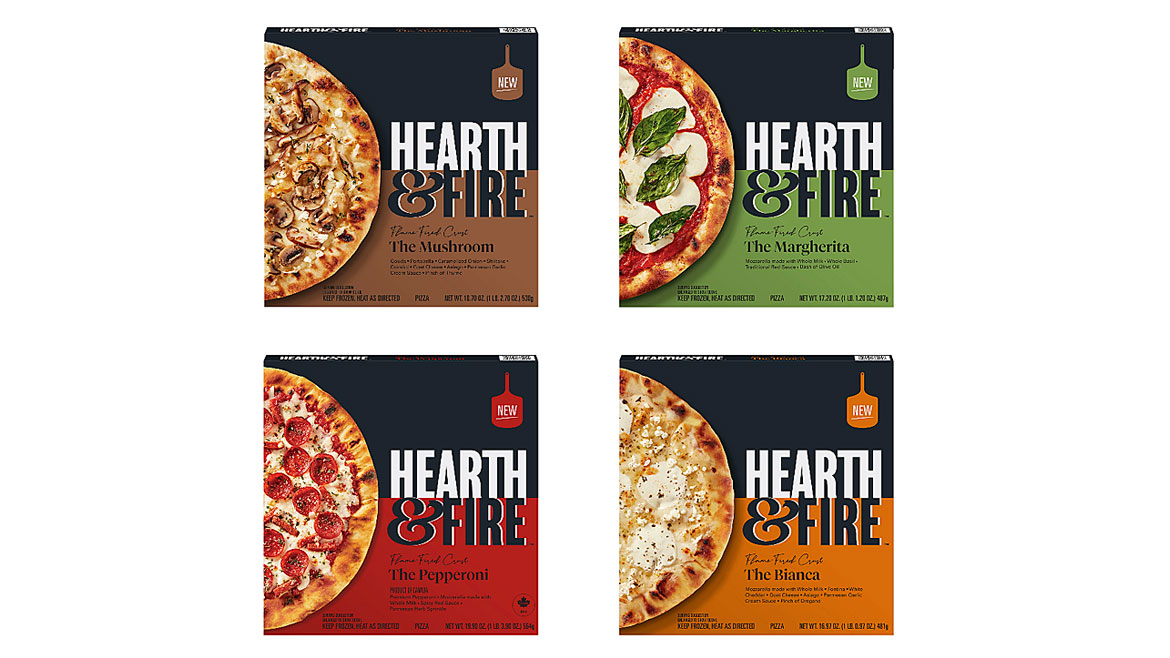
R&FF: What is unique about Hearth & Fire packaging?
Thompson: Once our Hearth & Fire pizzas are made, we package them into a vacuum-sealed bag to lock in the flavors and appearance of the pizza at its peak. We conducted extensive testing of various packaging to determine the best packaging film to lock in the flavor and appearance of the pizza. It was extremely important to us to preserve the product quality from product to the consumer.
There’s an additional dimension of packaging we had to consider as well. Since it’s a digitally native brand and we’re shipping a frozen pizza via direct-to-consumer eCommerce, we had to crack the code on getting the product to its destination while preserving the quality and integrity built by Shelly and Roger. And, we had to do it while balancing for sustainability and environmental impact.
R&FF: How many stores is Hearth & Fire in today?
Thompson: Hearth & Fire pizza is currently at select retailers including King Sooper’s in Denver, Colorado, Mariano’s in Chicago, Illinois, QFC in Washington, Fred Meyer in Oregon, Kroger in Cincinnati, Ohio, and Atlanta, Georgia, Fry’s in Phoenix, Arizona, and Hy-Vee locations throughout the Midwest. Later this year, we will have added distribution that will result in Hearth & Fire pizza being at more than retail locations. Our pizza can also be purchased via direct-to-consumer shipping on our website.
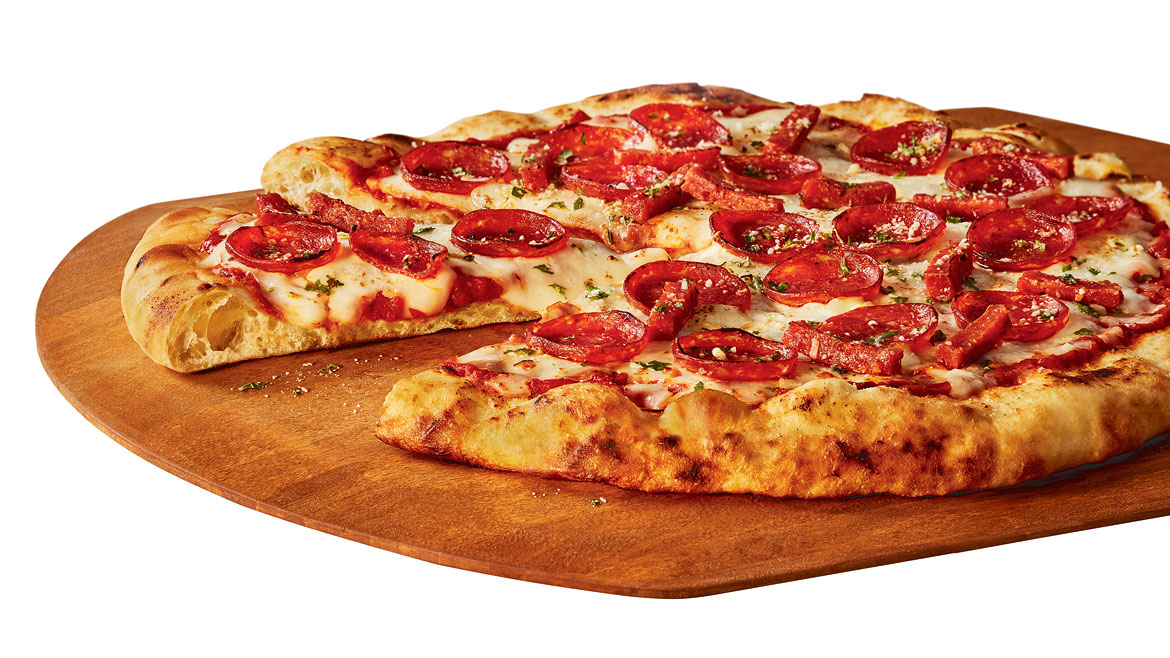
R&FF: Logistically, how are your products distributed to stores, and does Hearth & Fire have a direct-to-consumer/e-commerce strategy?
Thompson: Hearth & Fire pizza was born on the internet as a digitally native brand. It was a publisher of content for an online audience that cared deeply about a craft quality lifestyle. Once the pizza was ready, we inherently needed to build in digital shopping capabilities. We built out DTC (direct-to-consumer) and made the product available across the lower 48 states (plus Washington D.C.). We’ve also been fortunate to see the product emerge with major retailers now.
For pizzas that go to retailers, we have our direct-store-delivery team, which is a real competitive advantage. These team members ensure that the delivery process from production to store shelves is executed flawlessly. While we are at a limited number of retailers, we will see expanded distribution later this year and our DSD team will play a large role in that expansion.
R&FF: What sustainable programs does Hearth & Fire have today? What areas of sustainability are most important to your company?
Thompson: As a company, we always strive to continuously improve in many areas of sustainability. Some of our focus areas include more sustainable packaging, energy usage in our facilities and on the road, and recycling. When developing the e-commerce packaging, we were very conscious of the amount of packaging materials required to deliver frozen pizza safely and efficiently to consumers’ homes. During our development process, we incorporated consumer feedback to create 100% recyclable packaging.
R&FF: What’s on the horizon for Hearth & Fire?
Thompson: Our goal right now is to drive as much trial of Hearth & Fire pizza as possible. We have plans for expanded distribution later this year that will nearly double the amount of current retail locations carrying our product.
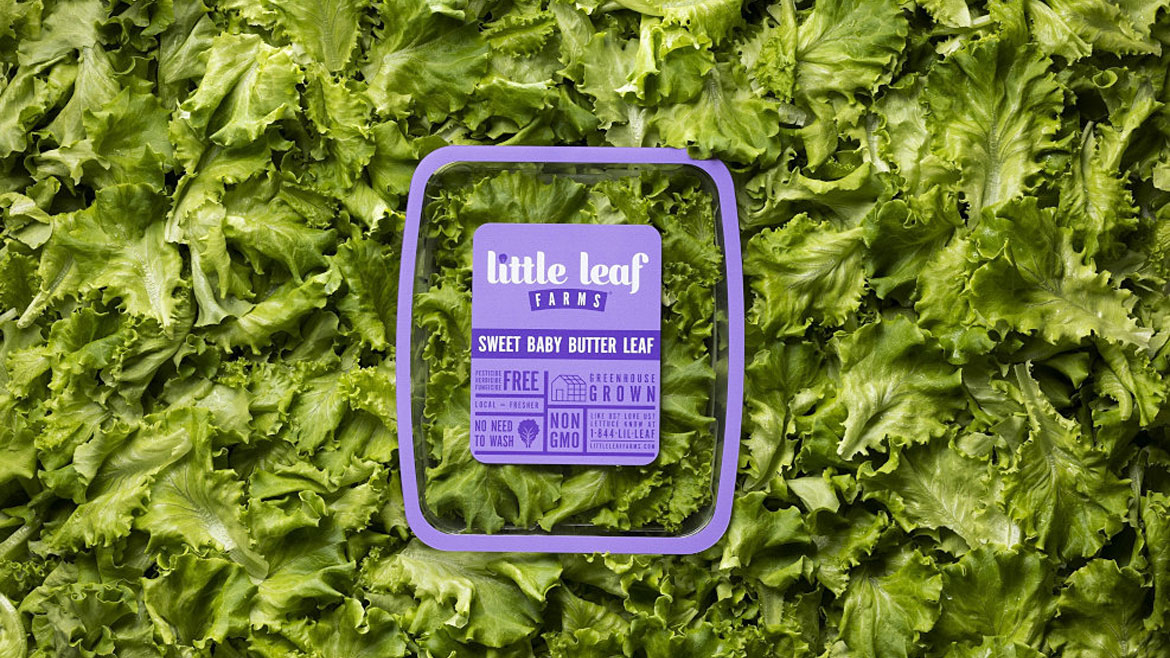
Little Leaf Farms Sweet Baby Butter Leaf Lettuce
Paul Sellew, founder and CEO
R&FF: Congratulations on placing second in our 2023 Best New Retail Products Contest. What does the recognition mean to Little Leaf Farms?
Sellew: We are thrilled to have placed second in this year’s Best New Retail Products Contest! At Little Leaf Farms, our goal is to provide consumers with fresh, local, sustainably farmed lettuce year-round, so we’re very excited that our newest addition, Sweet Baby Butter Leaf, is being recognized in this way and has received such positive feedback alongside our existing offerings
R&FF: What innovative features does Little Leaf Farms Sweet Baby Butter Leaf Lettuce have that helped it finish second?
Sellew: Little Leaf Farms Sweet Baby Butter Leaf lettuce is grown through greenhouse-based controlled environment agriculture (CEA). Our process and the CEA movement stands in stark contrast to most lettuce on grocery store shelves today, which travel thousands of miles before reaching stores, with every day spent on the truck sacrificing fuel and freshness. Using advanced greenhouse technologies, we’re able to grow our lettuce 365 days a year, harvesting it daily and delivering it grocery stores within 24 hours, which helps keep the lettuce fresh and crisp much longer than field-grown greens. Unlike field-grown lettuce, Sweet Baby Butter Leaf is seeded, grown, and harvested without touching human hands, so there’s no need to wash the lettuce before consuming. We also grow the lettuce without the use of pesticides, herbicides, and fungicides, and nurture the greens in an ecosystem that harnesses sunlight and fresh rainwater for sustainable production.
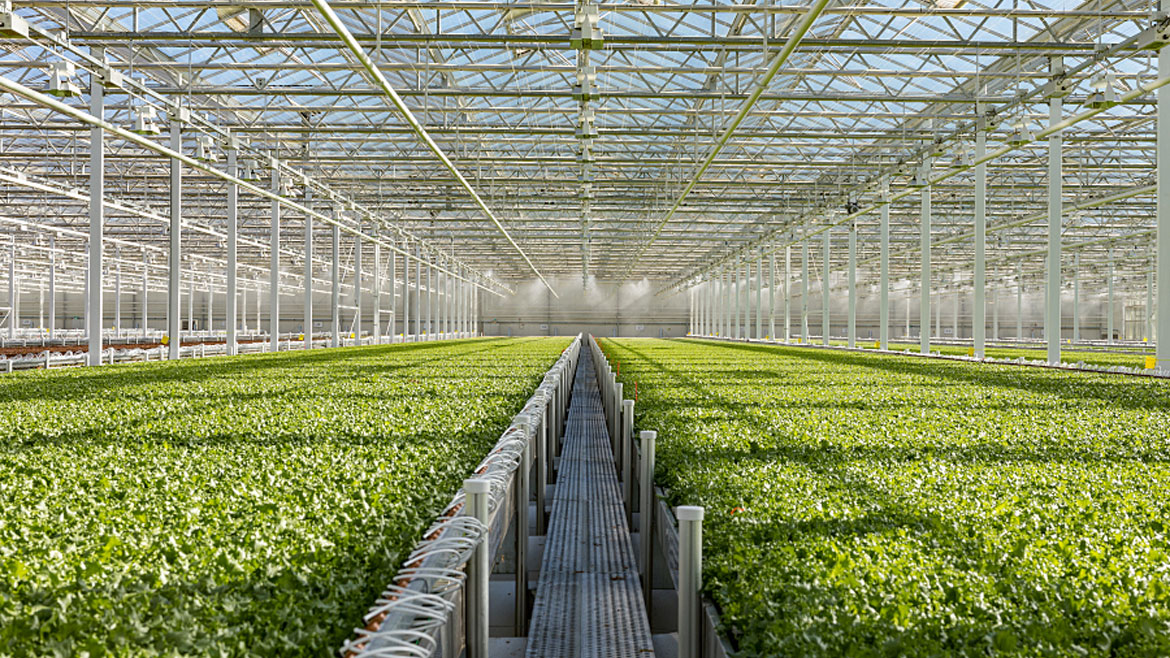
R&FF: What is unique about Little Leaf Farms Sweet Baby Butter Leaf Lettuce packaging?
Sellew: Our Sweet Baby Butter Leaf is currently in packages made of 100% recycled PET, meaning they are infinitely recyclable and help provide a much longer shelf life for our leafy greens. About 35% of leafy greens are wasted, with the majority of that waste coming from folks tossing their lettuce out at home. With this in mind, our goal was to create packaging that would provide consumers with fresher lettuce for longer, leading to less lettuce in landfills. When kept in the original packaging, our leafy greens will stay fresh for at least two weeks, giving consumers more time to enjoy our crispy lettuce.
R&FF: How many stores is Little Leaf Farms Sweet Baby Butter Leaf Lettuce in today?
Sellew: Little Leaf Farms has grown its retail sales by more than 50% this past year with the opening of our newest greenhouse in McAdoo, Pennsylvania, making Sweet Baby Butter Leaf and our other lettuce varieties available in 3,500 stores across the Northeast.
R&FF: Logistically, how are your products distributed to stores, and does Little Leaf Farms have a direct-to-consumer/e-commerce strategy?
Sellew: Little Leaf Farms now has greenhouses in both Devens, Massacusetts, and McAdoo, Pennsylvania, and distributes its products from both facilities throughout the East Coast and Mid-Atlantic. Our leafy greens are also available for home delivery in select markets through Instacart.
R&FF: What sustainable programs does Little Leaf Farms have today? What areas of sustainability are most important to your company?
Sellew: Every step of our process, from the seeds we plant to the package consumers open, was designed to limit our impact on the planet. We utilize captured rainwater in our soil-less farming, which results in 90% less usage than conventionally grown greens. Our greenhouses are also built to maximize the free power of the sun, allowing us to grow our lettuce with natural sunlight and solar-powered energy. Most importantly, because our lettuce is delivered to grocery stores within 24 hours of harvesting, we avoid the damaging impacts of large amounts of fossil fuels that are necessary to transport leafy greens across the country.
R&FF: What’s on the horizon for Little Leaf Farms?
Sellew: Following a successful launch, we doubled our production of Sweet Baby Butter Leaf at the end of last year and are planning to double production again in 2023. We also recently announced that we’re projected to break $100M in sales this year – a milestone we’re on track to reach not only because of the state-of-the-art technology we’ve implemented into our growing process, but because of the hard work and dedication of our incredible team. Looking ahead, we plan to open several more greenhouses to achieve our expansion goal of 100 acres under glass by 2026. We believe in the promise of CEA as a viable and important path to produce production and remain committed to bringing our fresh, sustainable greens to all.
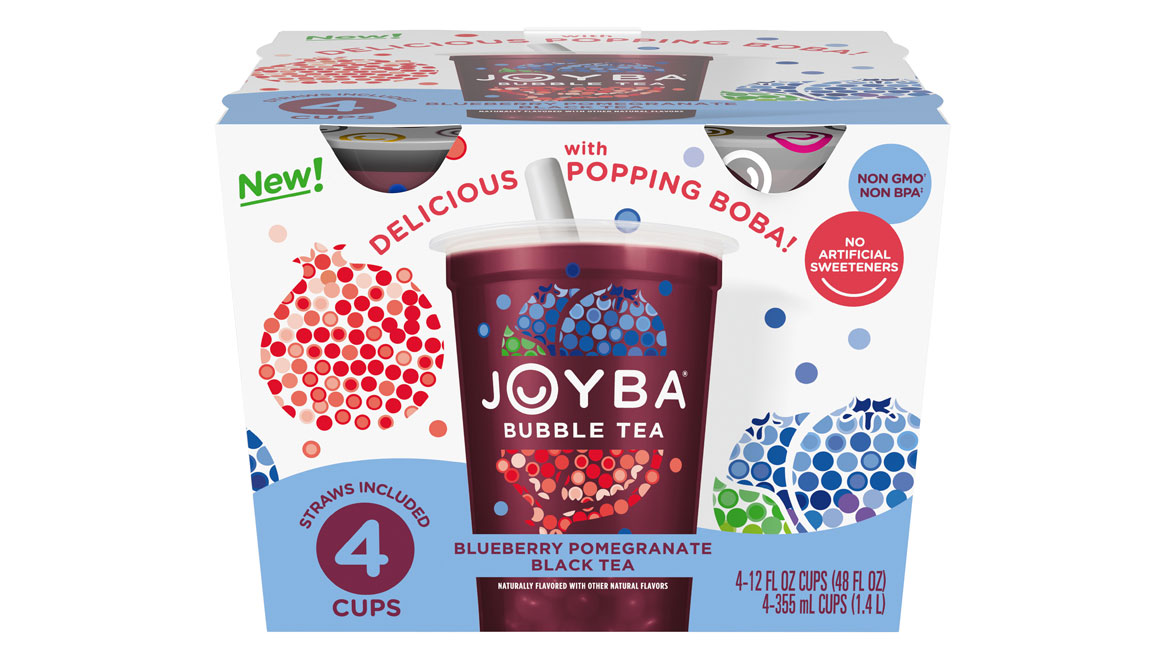
Joyba Bubble Tea Blueberry Pomegranate
Maggie Streng, brand manager
R&FF: Congratulations on placing third in our 2023 Best New Retail Products Contest. What does the recognition mean to Joyba Bubble Tea?
Streng: JOYBA is honored to win this recognition. JOYBA’s goal has been to bring the boba shop experience to customers in an affordable and accessible way nationwide. We are excited that this recognition helps us spread the word and allow consumers to discover and enjoy bubble tea through JOYBA.
R&FF: What innovative features does Joyba Bubble Tea have that helped it finish third?
Streng: Innovation is within JOYBA’s DNA as it is one of the first ready to drink bubble teas available on retail shelves nationwide that is made with the same quality you’ll find in a boba shop—popping boba and straw included. JOYBA is not only innovating the market by making bubble tea accessible for all at an affordable price, but also with its refreshing flavors like Mango Passionfruit and Raspberry Dragonfruit, all which include our unique popping boba that we created in house with the help of a Taiwanese boba expert.
R&FF: What is unique about Joyba Bubble Tea Blueberry Pomegranate packaging?
Streng: JOYBA Bubble Tea is vibrant, fun and evocative of the boba shop. It’s perfect for drinking on-the-go, complete with a telescoping straw included in the cup. You just pull the tab, remove the straw, and pierce the lid to sip and enjoy!
R&FF: How many stores is Joyba Bubble Tea Blueberry Pomegranate in today?
Streng: JOYBA is available in retailers nationwide including Target, Costco, Sam's Club, Walmart, Circle K, Kroger, Publix, Albertsons, and Safeway.
R&FF: Logistically, how are your products distributed to stores, and does Joyba Bubble Tea have a direct-to-consumer/e-commerce strategy?
Streng: JOYBA products are distributed to stores using a standard distribution model for CPG brands. Due to the delicate nature of our product, we do not currently distribute using a direct-to-consumer model, however JOYBA is available for on-demand purchase using apps like Instacart and DoorDash.
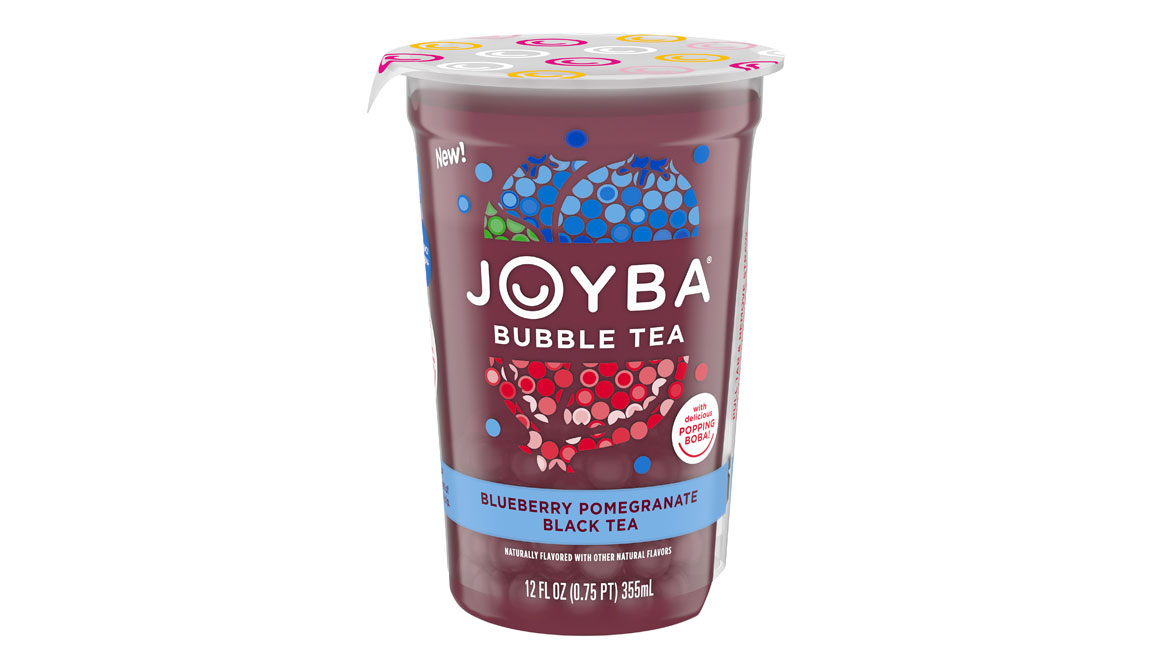
R&FF: What sustainable programs does Joyba Bubble Tea have today? What areas of sustainability are most important to your company?
Streng: Our sustainability efforts are included within our packaging as JOYBA comes in BPA-free packaging. Other sustainability efforts can be seen within our parent company Del Monte Foods such as helping lead the upcycled food movement to reduce waste and greenhouse gas emissions. Del Monte Foods has diverted more than 25 million pounds of food in 24 months from landfills through upcycling and food donations. In fiscal 2022, the company upcycled approximately 600,000 pounds (270 tons) of surplus boba syrup, green beans, and pineapple juice. In addition to sustainability, purpose is top of mind for JOYBA as it believes in the power of bringing joy to everyday life. That’s why JOYBA is making a commitment to bring joy to youth by launching a program this summer to encourage peer-to-peer connections.
R&FF: What’s on the horizon for Joyba Bubble Tea?
Streng: JOYBA is launching a line extension this fall, Joyba Botanicals with two new flavors: Sweet Peach Honeysuckle and Strawberry Rose. Both are made with real brewed green tea infused with natural fruit flavors and complimentary (honeysuckle or rose) botanical essences.
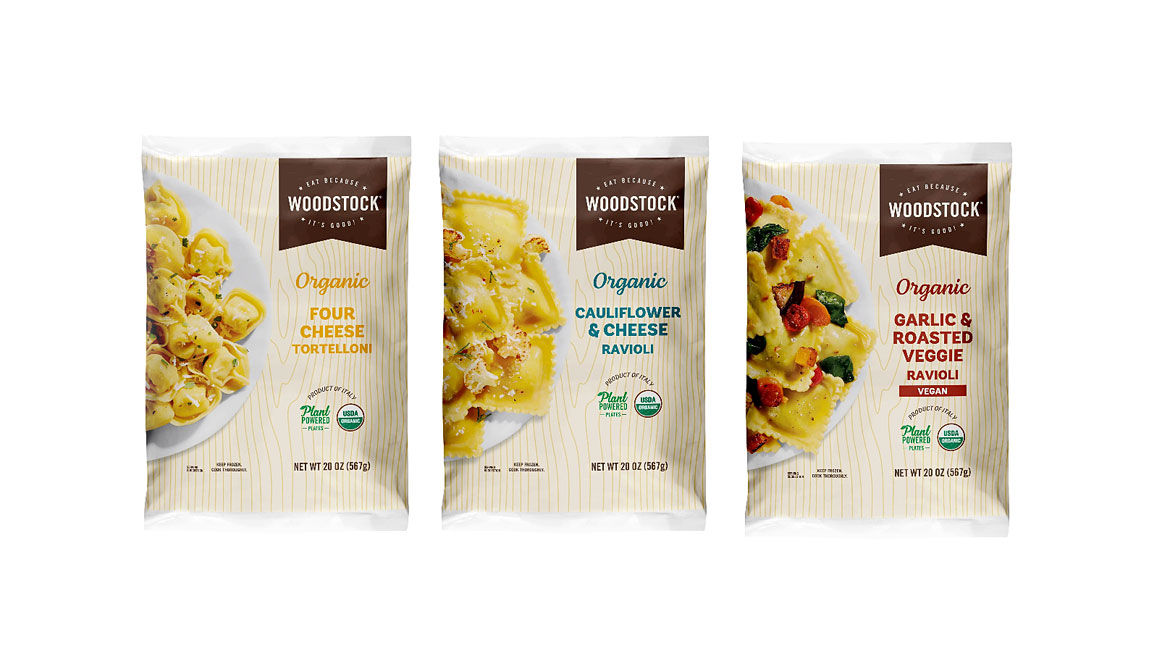
Woodstock Frozen Pastas
Colleen Thompson, director of Brand Marketing
R&FF: Congratulations on placing fourth in our 2023 Best New Retail Products Contest. What does the recognition mean to Woodstock Frozen Pastas?
Thompson: Woodstock is thrilled to see its Frozen Pastas recognized in Refrigerated & Frozen Food’s 2023 Best New Retail Products contest. As a leader in the organic and non-GMO category for over 35 years, we are proud to further augment our position as a driver of innovation throughout the frozen aisle with the launch of Woodstock Frozen Pastas. Woodstock’s Frozen Pasta varieties offer consumers a convenient and family-friendly product made with high-quality ingredients that can be prepared in minutes. Bringing restaurant-quality meals to shoppers’ kitchens, we’re proud to offer premium meal solutions that appeal to a variety of consumer preferences, including vegetarian and vegan pastas.
R&FF: What innovative features does Woodstock Frozen Pastas have that helped it finish fourth?
Thompson: With a growing number of customers seeking out convenient meal options, Woodstock Frozen Pastas meet this need by offering quick and easy dishes that don’t sacrifice on taste, nutrition or quality. Produced using traditional and authentic pasta-making methods, Woodstock Frozen Pastas are a premium meal solution made with simple and satisfying ingredients. The product line, which features tortelloni and ravioli, is USDA Certified Organic and packed with high-quality ingredients, containing up to 16 grams of protein per serving. Woodstock Frozen Pastas feature nutritious, gourmet-quality pasta in six varieties including Spinach & Cheese Ravioli, Four Cheese Tortelloni, Cauliflower & Cheese, Red Lentil & Eggplant Ravioli, Butternut Squash Ravioli and Garlic & Roasted Veggie Ravioli. All six varieties are made with no synthetic colors or flavors, offering a fresh taste with freezer-ready convenience.
R&FF: What is unique about Woodstock Frozen Pastas packaging?
Thompson: Available in family sized 20-ounce packages, Woodstock Frozen Pastas are conveniently prepared so they are ready to enjoy in just minutes, making them great for busy families seeking simple and nutritious meal options that are perfect for everything from easy dinners to elevated restaurant-quality dishes at home.
R&FF: How many stores is Woodstock Frozen Pastas in today?
Thompson: Woodstock Frozen Pastas are available nationwide in 1,354 stores (excluding third party) with distribution at grocers including NCG, The Giant Company, Natural Grocers, Cub, Earth Fare Management Group, Mom's Organic Market, Metropolitan Market, Good Earth Fairfax, Niemann Foods Inc, Kimberton and Jimbos.
R&FF: Logistically, how are your products distributed to stores, and does Woodstock Frozen Pastas have a direct-to-consumer/e-commerce strategy?
Thompson: Woodstock Frozen Pastas are available in-store at retailers nationwide, leveraging UNFI’s vast distribution
R&FF: What sustainable programs does Woodstock Frozen Pastas have today? What areas of sustainability are most important to your company?
Thompson: Woodstock celebrates foods that make you feel great about what you buy, eat and serve your family and the brand is proud to be a trusted destination for organic and non-GMO products. Woodstock currently offers over 150 organic and over 170 Non-GMO Project Verified items. Woodstock has been providing organic options for over 35 years and believes in real food that is both good for your body and good for the planet. Woodstock’s product line, including the Woodstock Frozen Pastas, feature simple and satisfying ingredients farmed from sources you can trust.
R&FF: What’s on the horizon for Woodstock Frozen Pastas?
Thompson: Woodstock remains focused on continuously developing new product innovations that meet consumer trends and their evolving needs while remaining committed to organic and non-GMO. Woodstock’s primary focus at this time for our frozen pasta line is building our retail presence and reaching more consumer households with the hope of future line expansion to offer even more delicious and easy-to-prepare meal solutions.
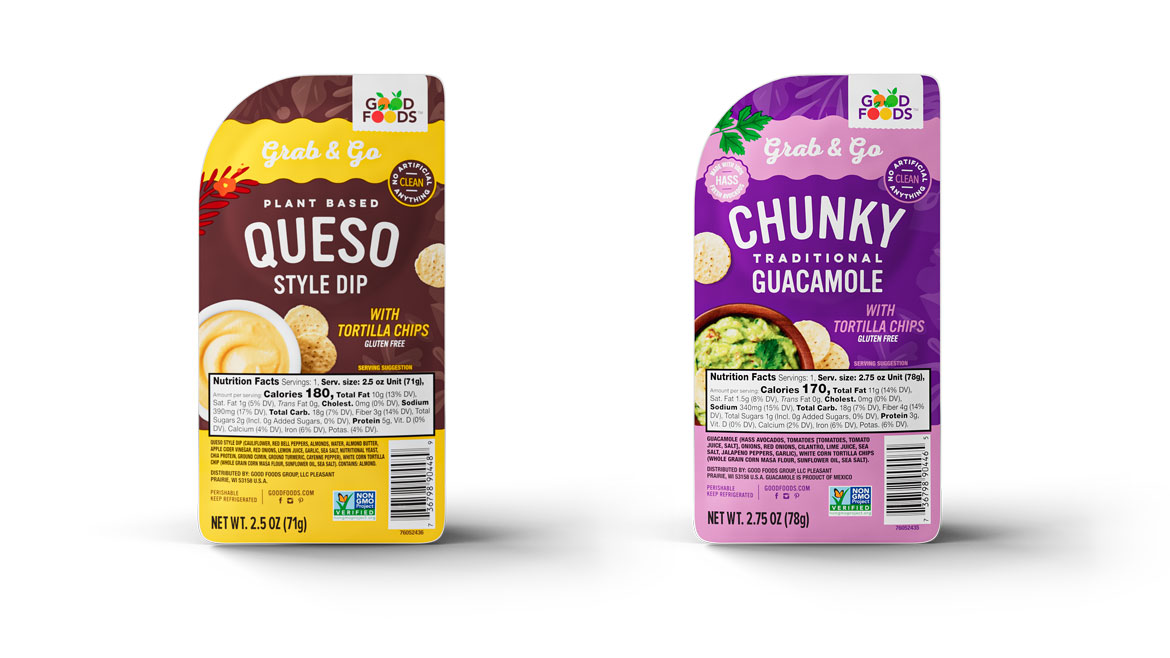
Good Foods Grab & Go Snack Packs
Briana Voss, senior director of Omni–channel Marketing
R&FF: Congratulations on placing fifth in our 2023 Best New Retail Products Contest. What does the recognition mean to Good Foods?
Voss: We’re honored to be recognized for this new product innovation and positioned alongside other notable brands. This acknowledgment is a testament to our customer-inspired approach to product development. We saw an opportunity to help our busy, health-conscious consumers stay fueled throughout their daily routines, resulting in a convenient way to enjoy our tasty, delicious Chunky Guacamole and Plant Based Queso Dip on the go.
R&FF: What innovative features does Good Foods Grab & Go Snack Packs have that helped it finish fifth?
Voss: The majority of snackers prefer ready-to-eat snacks versus those requiring preparation. Like full-size dip portfolio, our new Grab & Go products combine convenience and health without sacrificing flavor or freshness. Perfect for traveling and featuring our fan-favorite dips paired with corn tortilla chips, both varieties are available in single-serve 2.5-ounce packs and are Non-GMO Project Verified, vegan, gluten-free and contain 180 calories or less. In addition, they’re made using High Pressure Processing (HPP) technology, maintaining their freshness without the use of preservatives.
R&FF: What is unique about Good Foods Grab & Go Snack Packs packaging?
Voss: These 2.5-ounce packs are small enough to be taken anywhere on the go and contain two compartments — one for our delicious dips, and the other for the corn tortilla chips. The durable packaging material allows us to preserve the product’s flavor and freshness using HPP technology.
R&FF: How many stores is Good Foods Grab & Go Snack Packs in today?
Voss: The Grab & Go Snack Packs are available at select retailers and through direct-to-consumer channels like Hungryroot or our Ecommerce store. We are continuing to gain more distribution as this new item takes off. Additionally, we will be sampling the Grab & Go Snack Packs at select consumer events nationwide.
R&FF: Logistically, how are your products distributed to stores, and does Good Foods have a direct-to-consumer/e-commerce strategy?
Voss: Good Foods supports customer pick-ups, shipments direct to retail partners and distribution centers. We also sell a selection of our products — and merch — in uniquely-themed bundles on our website.
R&FF: What sustainable programs does Good Foods have today? What areas of sustainability are most important to your company?
Voss: Our brand’s mission is to make the world a healthier place, and sustainability is a part of that. Our business works towards a reduced carbon footprint by reducing waste, energy, water, and freight emissions through programs such as recycled water in our production process and repurposed byproducts. We use a vendor code of conduct for responsible sourcing, post-consumer recycled materials and reduce plastics.
R&FF: What’s on the horizon for Good Foods?
Voss: We have a few exciting new products that we can’t wait to share in the upcoming months, and we’re once again hitting the road this summer to connect with consumers and sample our tasty dips and guacamole at regional events across the country.

